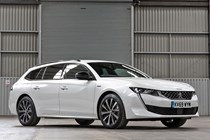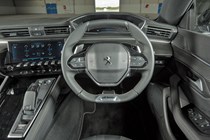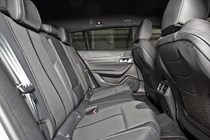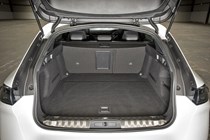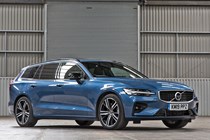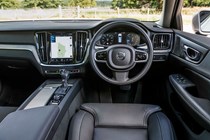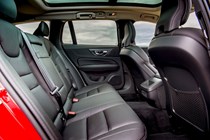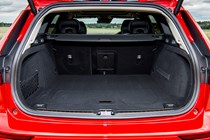Once upon a time, if you wanted a more spacious and practical version of your family hatchback, you got the estate version. Simple. Now, the appeal of the 4x4 has taken over, and you’re far more likely to upgrade that family hatchback to a crossover or SUV.
The extra kerb appeal of off-road styling and higher ride height has seen the slight decline in popularity of large family cars like the Ford Mondeo and Vauxhall Insignia.
Before you join the hordes, take time to consider the estate car though. They cost roughly the same as a fashionable SUV, but trade ride height for a bigger boot, which is surely more important than styling to many. The main difference is that you just sit closer to the ground.
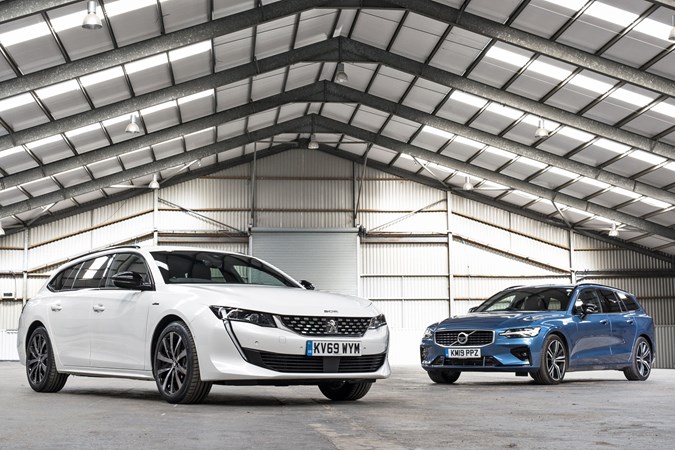
Even that’s not much of a compromise, because the Peugeot 508 SW and Volvo V60 tested here use that low stance effectively – they’re purposeful, low and look great.
So have space and practicality been compromised in pursuit of style? We’re big fans of the V60, but does the Peugeot do enough to choose it over the BMW 3 Series Touring, Audi A4 Avant and Mercedes C-Class Estate?
Peugeot 508 SW
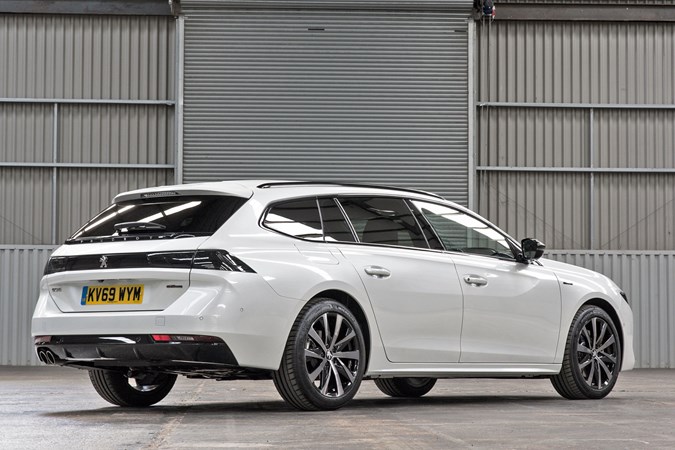
Joining the 508 Fastback as Peugeot’s flagship models, the SW is a far cry from boxy Peugeot estates of old with sleek lines, a swooping roofline and the same concept-car interior.
That does mean it isn’t actually the most spacious family car – with a cocooning feel up front among the tech-heavy dashboard, although there’s a decent amount of room in the back seats if you’re not too tall. The biggest problem in the back is how dark it is – you definitely need a model with a sunroof to brighten things up.
The boot is the same size as the Volvo’s (well, Peugeot’s 530 litres vs the Volvo’s 529), but the car is very low and it’s not as easy to get to as the boot in the V60. The rear is more steeply raked than the Volvo too, which is great for style, but not so great if you want to load larger items with the rear seats folded. There’s less outright space.
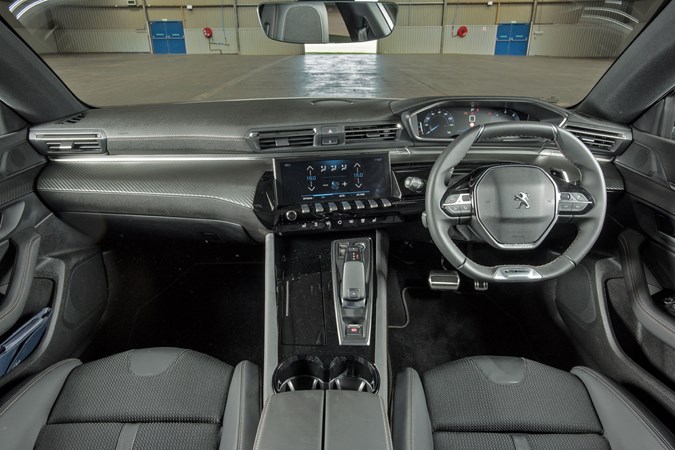
A broad range of engines allows some flexibility between price, performance and economy. All the options are a good fit – just make sure you pick a mid-range one for the best value. We’d choose a PureTech 180 petrol or BlueHDi 160 diesel with the automatic transmission. Allure or GT-Line trims are where we’d aim for the best mix of equipment and cost, too. You can read about the engines and trims on offer in greater detail in our full review of the 508 SW.
Volvo V60
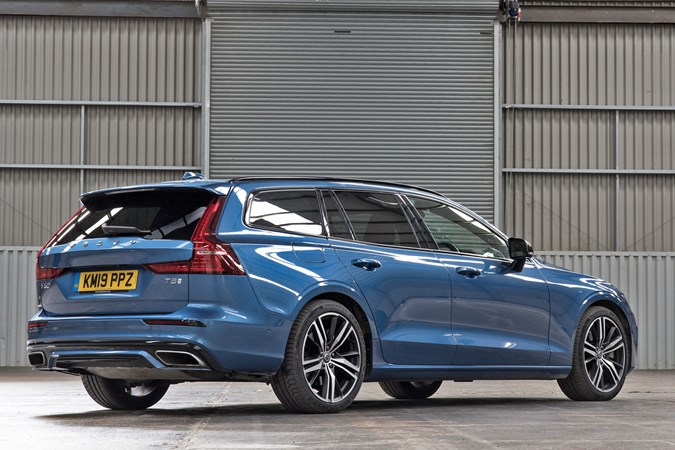
The V60 is boxier than the Peugeot, but still a smartly-styled wagon. In fact, name a new Volvo that doesn’t look good these days. That means outright space is far more usable, and the larger windows make the already-larger interior feel much more spacious – the main difference is the generous amount of headroom in the rear, but legroom is also better. You can also get some kid-friendly integrated booster seats that helps with everyday life.
Quality is excellent, too, with a solid dashboard and simple Scandi design. Everything’s controlled via a more user-friendly touchscreen than the 508’s, although there are even fewer buttons on the Volvo’s dash. No matter, it’s a lot easier to operate than the Peugeot’s slightly busy (yet eye-catching) dashboard, but still falls behind the systems found in the BMW 3 Series Touring and Audi A4 Avant.
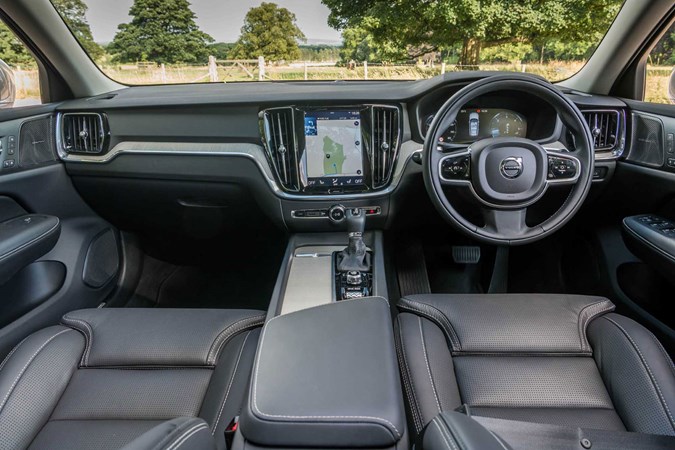
The engine selection is just as comprehensive, but again the best models are in the middle of the range, otherwise the Volvo gets far too pricey. Entry-level Momentum is well-specified, but R-Design adds a little more flair to the exterior. Go for a T4 petrol or D4 diesel for decent performance and economy, again with the auto ‘box that suits the car better than a manual. There’s more information about the rest of the V60’s engine range in our full review.
On the road – Volvo has the edge
Both of these estate cars major on comfort rather than sportiness, and they’re better for it. They offer excellent refinement over longer journeys, and the engines remained hushed for the majority of the time – even when you need to rev them out a bit more.
If you do decide to throw them about a bit on a twisty road, it’s the Volvo that feels the more agile, despite Peugeot’s attempts to make the 508 feel sportier with its dinky steering wheel. In terms of ride comfort, there’s not a huge amount separating them as long as you stick to models with smaller wheels. Go for bigger items and they can become a little more crashy – especially the V60.
The Peugeot can become a little unsettled by bad bumps in the road where the Volvo stays composed, but they both impress with general comfort of the seats. The Peugeot runs the Volvo very close for seat comfort and adjustability.
Both have very light steering, with changeable driving modes to tweak the feel, but in most situations they’re best left in the standard setup. We’d recommend automatic transmissions in both cars, using eight-speed gearboxes, and both perform remarkably similarly, remaining smooth and responsive the majority of the time. The Peugeot just nudges it for responsiveness, avoiding the sometimes jerky and delayed nature of the Volvo’s transmission.
Which is the best estate?
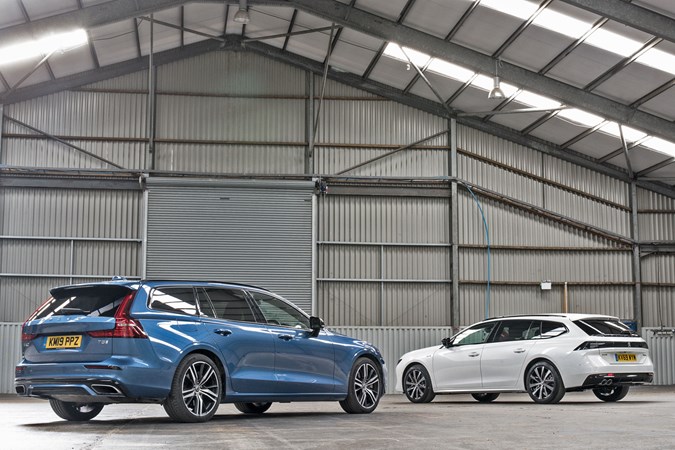
We’d understand if you went straight to the Peugeot dealer just because of the way it looks. Peugeot should be applauded for being bold with the design of the 508, both inside and out. In fact, while it seems like there are quite a few compromises to be had compared with the Volvo, it’s still an estate car that’s easy to recommend – especially when the boot is just as usable in terms of capacity under the load cover.
The engines available are all strong, and it’s refreshing that the best models are found in the middle of the range and not at the most expensive end. The boot is well-shaped and deep, and there’s enough room for a small family. There’s no arguing with the futuristic dashboard in terms of quality and design either. The problem is the looks do have more of an impact on interior space than in the Volvo. There’s less headroom, and taller drivers and passengers could feel a little hemmed-in.
The Volvo wins here, though, thanks to its more impressive practicality as a family car. The engine range is more extensive than the Peugeot’s and, despite the higher cash price, PCP finance costs are competitive. The tech on offer is also easier to use than the 508’s, with a much more user-friendly dash interface.
If you’re not keen on either of these, check out our reviews of the main rivals:
>> BMW 3 Series Touring review
>> Mercedes-Benz C-Class Estate review
Or see our list of the best SUVs to buy if you want that high driving position.
Just so you know, we may receive a commission or other compensation from the links on this website - read why you should trust us.





